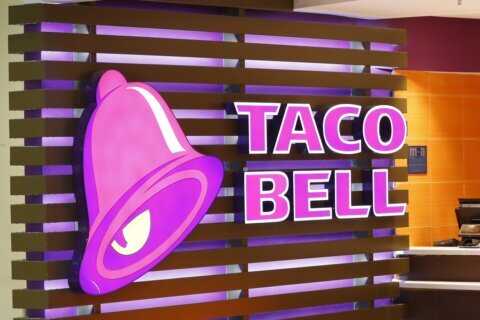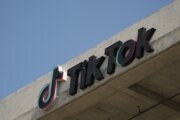Who couldn’t use more energy in their life? The top complaint I get from the athletes I work with, as an expert in plant-based nutrition, is that they lack energy. They wake up tired, hit a slump at 10 a.m. or 3 p.m., or just can’t wait to crawl into bed at night. When helping people find foods that make them want to tackle their day, instead of take a nap, I teach them to look at these five things to choose foods that will energize:
High net-gain. High net-grain foods are nutrient dense and easy to digest and assimilate, so you get a higher net energy gain. Whole, plant-based foods are high net-gain, resulting in less work for your body, more energy, minimized stress and better sleep quality. You’ll also feel less hungry because you’re giving your body what it biologically craves: nutrients.
Low-glycemic. The glycemic index is a measurement of how fast the carbohydrates in food are broken down into glucose, which directly relates to how these carbohydrates affect your blood sugar. Fiber, fat and protein all lower the GI of a food by decreasing the rate at which glucose is absorbed. Foods that have a GI of less than 55 are considered low-glycemic.
High in protein. Protein helps give you energy, and it keeps you fuller for longer because it’s very satiating and helps manage blood sugar. Protein-rich foods have a lower GI and take longer for you to digest, so you won’t be as hungry or lethargic in 20 minutes.
High in fiber. Like protein, fiber helps keep you full, as well as regulate your digestion and manage blood sugar. Fiber is found in almost all minimally processed plant-based foods.
Optional: Source of holistic caffeine. Caffeine is a stimulant — not the first choice for long-term energy. Stimulation is short-term energy, and it treats the symptom, rather than the cause of fatigue. Using stimulants such as caffeine or sugar feels great initially, but then results in an energy crash — something I like to call biological debt. Like credit card debt, biological debt needs to be paid back. Biological debt creates a vicious cycle of fatigue that is detrimental to your health. However, sometimes (especially pre-workout), you need an extra boost from caffeine. Then, I always look for sources of natural, holistic caffeine, such as that found in yerba maté and green tea (more information below).
With those five principles in mind, these are my top 10 foods to energize:
Vega One. Vega One gives you the energy you need to tackle your full life with gusto. It has 20 grams of premium, plant-based protein, six servings of greens, 50 percent DV food-based vitamins and minerals, fiber, omega-3, antioxidants and probiotics, all in one delicious scoop. Plus it’s low-glycemic (15.8), Non-GMO Project Verified, vegan certified, gluten-free and made without dairy, soy, artificial flavors, colors or sweeteners. Just shake and go, or add Vega One to your favorite smoothie for an energy boost.
Dark leafy greens. Kale, Swiss chard, collard greens, mustard greens, spinach and more are an energizing addition to your meals. All dark leafy greens are high in nutrients and rich sources of chlorophyll, yet low in calories. I make salads out of greens several times a day, and always start my morning with a plant-based smoothie that includes at least one cup of greens.
Hemp seeds. Hemp is a superfood by any definition. A complete protein, rich in fiber and omega-3s, hemp is a great low-glycemic addition to any diet. Look for cold-pressed hemp seed oil for salad dressing, hemp protein for smoothies and hemp seeds to toss onto salads and smoothies.
Quinoa. This pseudograin is 20 percent protein — making it a balanced source of carbohydrates for anyone. It’s gluten-free and rich in B vitamins, which help convert carbohydrates into energy in your body. Even if you feel like you’re too busy to make homemade meals, quinoa is a fast food that cooks in less than 15 minutes.
Soaked nuts and seeds. Raw nuts and seeds are nutrient dense, and soaking them unlocks higher nutrition potential. Soaking increases vitamin levels and removes the enzyme inhibitors that slow down digestion. I recommend soaking nuts and seeds in water over night (at least eight hours), rinsing thoroughly and then dehydrating for a snack.
Fruit. Although most fruit is high-glycemic when paired with a low-glycemic food (such as nuts or seeds), they can keep your energy levels consistent. Berries are the lowest glycemic fruits and can be eaten alone without a negative effect on your energy.
Coconut oil. Virgin, organic coconut oil is one of my favorite fats to consume. Coconut oil is made of medium chain triglycerides, which are digested in the body like a carbohydrate; effortlessly converted by the liver into energy. I’ll use coconut oil when cooking, or combine it with dates for mid-workout fuel.
Green tea. Caffeine from green tea feels steadier and less jittery than the spike and crash with caffeine from coffee. This is likely because green tea contains L-theanine, an amino acid found in tea that helps promote relaxation. I recommend drinking green tea hot or cold pre-workout.
Yerba mat é. Yerba maté is more popular than coffee in Argentina. This caffeinated tea is rich in antioxidants, phytonutrients and electrolytes. Many people (myself included) find that it provides a less jittery energy than coffee. I drink yerba maté hot or cold pre-workout. I formulated Vega Sport Pre-Workout Energizer with a combination of green tea and yerba maté (as well as low and high-glycemic carbohydrates) for an energizing pre-workout that won’t make you crash 30 minutes into your workout.
Fermented foods. Fermentation helps break down food, preserve it for longer and add beneficial probiotics. Probiotics are important for gut health. If you don’t have a healthy gut, you can’t digest and assimilate the nutrients in food efficiently. A healthy gut is key to consistent energy levels. Look for probiotics in raw sauerkraut, kimchi, non-dairy yogurt, non-dairy kefir or kombucha, as well as in supplement form.
By eating these foods regularly, you’ll find your energy levels are higher and more balanced. For recipes that incorporate all of these energizing foods, check out the Vega Recipe Center.
Tell us: Which foods energize you?
More from U.S. News
Seeds 101: A Guide, From Chia to Hemp
7 Reasons to Choose a Plant-Based Diet
10 Foods That Boost Your Energy originally appeared on usnews.com







